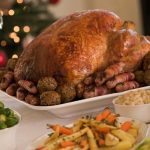Hogg prices remain strong as demand for lamb peaks
Prime hogg prices in the UK are some 30% higher than last year, with Ireland, France and Spain also reporting farmgate prices 15-20% higher.

Stuart Ashworth, head of economics services at QMS.
“Auction market throughputs through March have been well above last year’s levels, while the UK weekly slaughter of prime sheep has been running well ahead of last year throughout January and February,” said Stuart Ashworth Quality Meat Scotland’s director of economics dervices.
“So despite strong supplies of hoggs, farmgate prices have strengthened suggesting a basic strength in demand.”
Easter of course is important seasonally for lamb sales. Kantar Worldpanel analysis of UK retail sales reveals that for a number of years the volume of lamb sold in the four-week period including Easter can be double the levels of the month before and the month after.
“All of that growth in sales is put down to purchases of leg roasting joints, which can leave processors with a major challenge to sell the remaining cuts from a lamb carcase when demand for leg roasts is so high,” said Ashworth.
“Nevertheless, to meet orders, demand for slaughter stock inevitably increases,” he added.
Imports of New Zealand lamb usually peak at this time of year to meet this seasonal demand. This year though New Zealand have not been as active and the dry weather in New Zealand has seen early slaughter of their lamb crop.
“Slaughter statistics from New Zealand suggest that between October and the end of January they killed 10% more lambs than last year, although their January kill struggled to match year earlier levels,” added Ashworth.
“Not surprisingly New Zealand saw some growth in exports over this period, but the latest data suggests that the volumes exported in February failed to match last year.”
Ashworth was keen to stress that the growth in exports from New Zealand was not to the UK, where the volume shipped between October and February was little changed, but to China and some mainland EU countries like Germany and France.
France reported lower slaughter volumes throughout the autumn and into 2018 which led to increased imports initially from Ireland and New Zealand but as 2017 drew to a close the UK also increased deliveries. The UK also saw growth in exports to Germany and Belgium.
“Once again we see the importance of European Union customers to the market for Scotch and UK lamb,” said Ashworth.
“Europe also sees a lift in demand for lamb over the Easter period which will have supported prices there, but the decline in French production in particular, which for the first half of 2018 is estimated to be 2% by French sources. This suggests that there will continue to be a demand in key European markets for sheepmeat this year.”
He concluded: “In addition to this, the high farmgate prices in Scotland and the UK has clearly drawn hoggs onto the market which may mean supplies become tighter through April and May and the likelihood that despite cooling farmgate prices will remain firm.”

 Easter trading: beginning to look a lot like Christmas?
Easter trading: beginning to look a lot like Christmas? Trade visit to Thailand a win for British poultry
Trade visit to Thailand a win for British poultry
